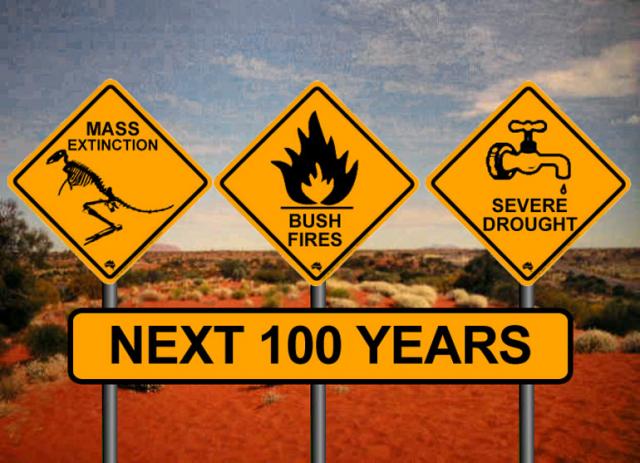The Big Dry Down Under just got a whole lot drier. The first three months of 2009 in the already parched Murray Darling basin had the least amount of rainfall since Australian weather records began 117 years ago.
This massive drainage supports $9 billion in agriculture but has been hammered by what some are calling the worst drought in 1000 years. Authorities in Australia make no bones about the cause of this freaky weather.
“We’ve had big droughts before and big floods before, but what we didn’t have was climate change,” said Rob Freeman, the chief executive of the Murray-Darling Basin Authority.
The Murray Darling is home to 2 million people who may not even have enough water to survive in the future. “I’d be loath to say that critical human needs will always be secure”, warned Freeman.
The recent rainfall record was not the only smashed. Water inputs for three-year period ending March 2009 were less than half of the previous record from the great drought of 1943-1946.
The drainage is so dry that Lake Alexandrina at the mouth of the Murray River is now two feet below sea level. The parched lakebed high in natural sulfides is now exposed to air and oxidizing into sulfuric acid – devastating local ecosystems.
While droughts are normal in Australia, there has never been one as hot as this.
The killer heat wave in January claimed more than 370 lives – more than double the number lost during the worst wildfires in Australian history this February.
Unprecedented temperatures peaked over 45 degrees in Melbourne and averaged 12 to 15 degrees above normal throughout the State of Victoria.
While so-called climate skeptics maintain that climate change is a hoax or a big mistake, Australian firefighters who faced the grim task of battling the worst bush blazes ever came away with a different conclusion.
In an open letter the Australian Prime Minister, the firefighters union called for urgent government action to curb carbon emissions and control climate change:
“Firefighters work in conditions that most of the public try to flee. We often put our lives on the line. We understand that our job is dangerous by its very nature. However, we are gravely concerned that current federal and state government policies seem destined to ensure a repeat of the recent tragic events… Given the Federal Government’s dismal greenhouse gas emissions cut of 5 per cent, the science suggests we are well on the way to guaranteeing that somewhere in the country there will be an almost annual repeat of the recent disaster and more frequent extreme weather events.”
Hard to argue with exerience like that.
As the Big Dry becomes even drier, there is yet another opportunity to see climate change in action by simply looking out the window. Australia is rapidly becoming a time machine to visit what our warmer world will look like.
Go here to find out more details about DeSmogBlog’s monthly book give-away.
Subscribe to our newsletter
Stay up to date with DeSmog news and alerts






